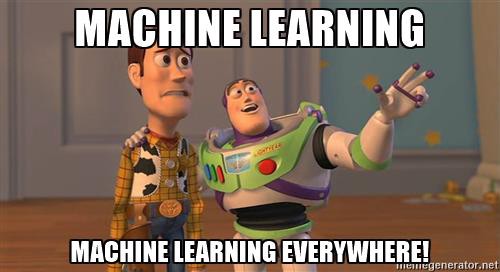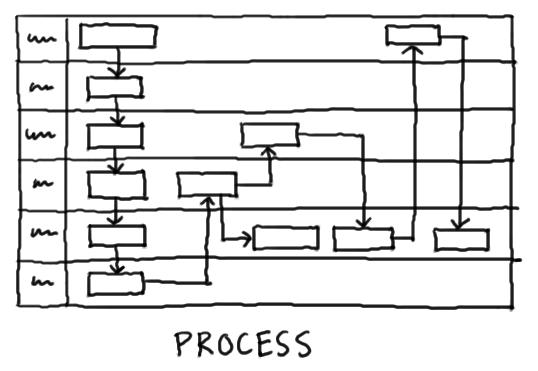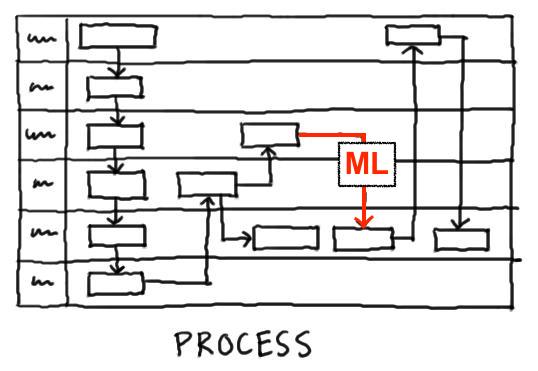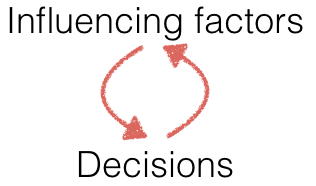

TLDR: Judging if Machine Learning techniques can enhance your business is hard. I will show five key aspects of Machine Learning-worthy business processes
As the buzzwords Big Data, Artificial Intelligence (AI), Machine Learning (ML) and Data Science are on everybody’s lips, I am more often approached by friends to discuss the potential of Machine Learning for their line of work.

Machine Learning is a summary of techniques that allow computers to learn. The field provides algorithms that are able to boost businesses’ performance by finding patterns in business activity, forecasting future events and optimizing decisions.
For someone without Data Science experience it might be hard to judge where Machine Learning can generate business value. So, in this blog post, I will sketch five characteristics of business processes that are worthy to be enhanced by Machine Learning.
So first of all, what is a business process? According to wikipedia it is
“A business process or business method is a collection of related, structured activities or tasks that produce a specific service or product (serve a particular goal) for a particular customer or customers.”.
So basically, everything that happens in a business is a business process. Well, that is easy. When I think about a business process, I visualize a flow chart, similar to this diagram

I feel that Machine Learning in the near future will be most beneficial to enhance existing business processes. There are some applications like autonomous driving or the google translator app that are disruptive and create totally new value chains, but the majority of applications/startups is based on existing business cases.
So, how can one find business areas that are worthy to be enhanced the holy ML grail? Let us start with some examples where ML already creates value:
Replenishment forecasting: Forecasts about the demand for singular articles can be used to anticipate future sales and order accordingly, reducing out of stock situations or waste while keeping the overall stock level low.
Optimization of service routes based on failure forecasts: One can use forecasts about failures in the near future to organize service schedules and routes not based on intervals (as in classic, periodic maintenance) but based on the individual usage and risk profile. This is denoted as predictive maintenance.
Classification of mails that contain spam: Based on the content, metadata and context, a classification algorithm can estimate the probability that a given mail contains spam.
Personalized marketing or prices. ML can help to tailor promotions or discounts to a client’s profile, which improve user engagement, revenue, conversion rate and other KPIs.
Detection of fraudulent transactions: Machine Learning can detect fraudulent payments by considering many factors such as the trustworthiness of the vendor, the recent cardholder’s behavior, time and location factors etc.
Let us visualize those business processes as flowcharts of decision, as done in the introduction above. Then in all five examples, ML is used to automate one or multiple decisions in the business process:

Further, there are more things that all those applications have in common. They fulfill five conditions.
So, what do those five business cases from above have in common? They have an uncertainty in the optimal decision, are mostly small decisions, have direct impact on business, there is a data history and the input data contains evidence for the target. Those are the five promised conditions, which I will now discuss in detail:
If the business process is already deterministic, then there is no need to deploy Machine Learning to automate it. Just use a rule engine to optimize it. In example 1. it is not clear how much customers will buy while in 3. it is not clear if a mail is spam or not.

An unfitting example for a ML process would be the decision when to start a global sale. This stands in contrast to lots of small decisions such as which products to put on sale. Also, you could automate which customers to send marketing material to, like in example 4. For the application of Machine Learning, we need many „small“ business processes. Those should be made frequently. So, focus on operational and not strategic decisions.

Real value is only generated by Machine Learning when predictions/decisions are automatically used and the algorithm can directly control the flow of the process. This is an requirement on both a technical level as well as on an organizational level. So to gain business value, you have to automate! Otherwise you get stuck with one time improvements or analysis.

There should be historic data about the course of old business processes. Otherwise models can not be trained (for non ML people: training describes the process of developing a ML system). So if you do not track old business processes, you have to start collecting data before you develop your Machine Learning application.

There should be input variables which can be internally linked to the optimal decision, which can only be validated by looking into the data. For example, in a predictive maintenance case, it could be that 80% of all failures are not predictable and occur spontaneous. In such a case, Machine Learning techniques are maybe not able to properly optimize the service routing like in example 3.
Also, very related business cases can behave totally differently. E.g. in the case of a replenishment system as in 1., it is not uncommon that there is enough evidence to anticipate the demand on a weekly bases but not on a dayly base. You can only check if there is enough evidence by actively exploring the data and doing experiments with initial statistical models.

So, checking those five conditions will give you an basic understanding if your business process can be enhanced by ML techniques. If one of those is not fulfilled, this is probably a real showstopper for your Machine Learning project.
Of course, beyond those five checkpoints, there is a huge range of other success factors that determines if Machine Learning will generate value in your line of work. For example, you will need change management to accompany the Machine Learning revolution, the algorithms will need a platform and infrastructure to run, and so on.
Also, keep in mind that
“optimizing a failing process make you only fail harder“.
So, let us say you are still in the business of renting VHS or DVDs - I am afraid to say so - but no algorithm will help you. If your business model is seriously flawed, Machine Learning can not prevent its downfall.
So, what do you think about those five aspects? Did I miss a key point?